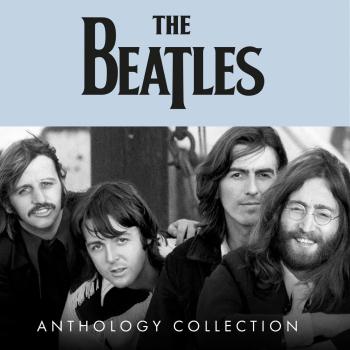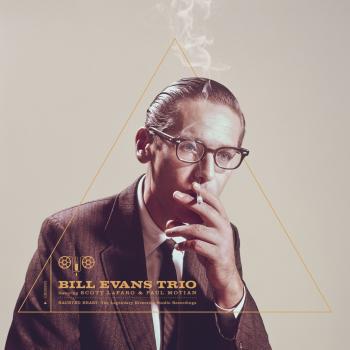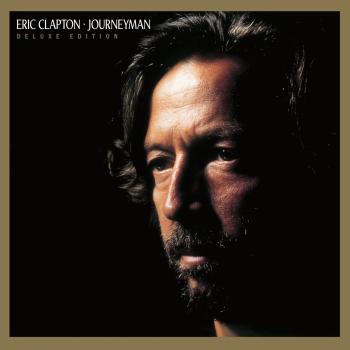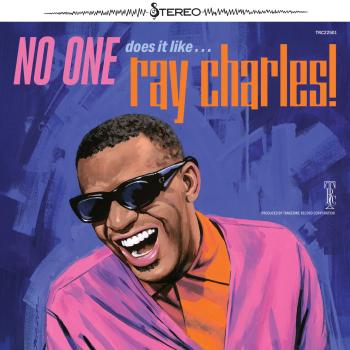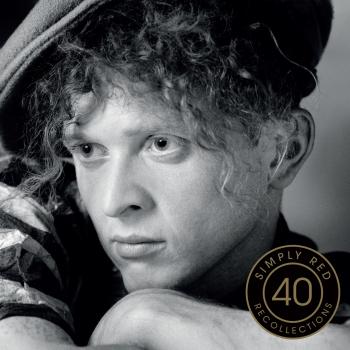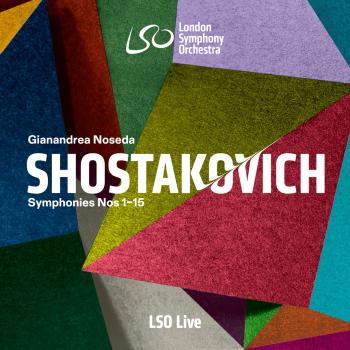
At The Half Note Cafe Vol. 2 Live At The Half Note Cafe, NY 1960 Donald Byrd
Album info
Album-Release:
2015
HRA-Release:
03.03.2015
Album including Album cover
I`m sorry!
Dear HIGHRESAUDIO Visitor,
due to territorial constraints and also different releases dates in each country you currently can`t purchase this album. We are updating our release dates twice a week. So, please feel free to check from time-to-time, if the album is available for your country.
We suggest, that you bookmark the album and use our Short List function.
Thank you for your understanding and patience.
Yours sincerely, HIGHRESAUDIO
- 1 Jeannine 12:50
- 2 Pure D. Funk 06:30
- 3 Kimyas 12:00
- 4 When Sonny Gets Blue 06:17
Info for At The Half Note Cafe Vol. 2 Live At The Half Note Cafe, NY 1960
As was noted on the first volume of At The Half Note Club, the running order of the show did not quite tally with the subsequent vinyl releases that appeared on the Blue Note label in 1960. Quite why the original compilers opted to re-arrange the albums is lost in the mists of time, but thankfully the whole of the show was made available over the two albums. What is revealed is one of the tightest bands Donald Byrd had ever assembled, including himself on trumpet, Pepper Adams (saxophone), Duke Pearson (piano), Laymon Jackson (bass) and Lex Humphries (drums). Particularly worthy of special mention is Duke Pearson, who wrote four of the eventual twelve tracks that appeared across the two albums. His playing too is little short of spectacular; it has been said that his soloing in the studio was somewhat stilted by comparison with the work he achieved during live dates. Of course, it is the work of Donald Byrd that will be of particular interest, and here across all four tracks he truly excels. There are several live recordings of Donald Byrd available; this and its companion volume are undoubtedly the best of the bunch.
„As Rudy Van Gelder continued to establish himself as the greatest studio engineer of jazz, he started to venture out into the nightclub scene of 1960s New York City to document the bands from the Blue Note label that were growing by strength in numbers and high-quality hard to post-bop. Donald Byrd's groups were changing and evolving, but by 1960 had reverted to two years prior with the return of baritone saxophonist Pepper Adams as his main foil. In early 1960 Byrd was working with Jackie McLean and Hank Mobley, but by autumn and winter Adams had reentered the picture, joining holdovers pianist Duke Pearson and drummer Lex Humphries. Some of this material sees the spotlight on live performances at the Half Note Cafe from the previous studio recording, Byrd in Flight, while other numbers are fresh interpretations of standards and more new material from Byrd and Pearson. Bassist Laymon Jackson spent some prominent time with Byrd, Lou Donaldson, and Nat Adderley before professionally fading from sight, but he is an excellent anchor for his bandmates, and one who deserves close inspection. Pearson's animated and excited "My Girl Shirl," the cute ditty "Child's Play," and Byrd's jaunty "Soulful Kiddy" are the reprised tracks, and kick off the set. They are a quintessential hard bop sandwich with a soul-jazz filling spiced by chopsticks piano. Two other tracks are penned by Pearson: the most famous of his works, the quick and bright "Jeannine," driven by the pianist's two-fisted comping chords; and "Chant," which is the most laid-back yet soulful selection. A pure Byrd contributes the fun, wholly blues-inspired "Pure D. Funk," alternating at will from quick waltz to slow blues, while "Kimyas" also exploits triplet figures in a chunky, popping Latin rhythm, very hip à la the best Art Blakey-led bands. "Cecile" is the most extravagant and moody blues at nearly 15 minutes, while standards "Between the Devil and the Deep Blue Sea" -- a perfect feature for the cool bass playing of Jackson -- and the ballad "A Portrait of Jennie" display the unflappable or tender side of Byrd, respectively, with additional chordal inventions from Pearson. It's clear that Byrd is an increasingly stronger player and leader at this time. While the role of Adams is somewhat sublimated in this group, he is totally a team player in tandem with the trumpeter on most melodies. Adams himself emerged, and his talent came to full fruition, when Byrd was his ostensible sideman for the 1958 group that recorded the classic Riverside album 10 to 4 at the Five Spot. Regardless of ephemeral leadership roles, this band clicks, runs fully on all cylinders, and expands these pieces averaging about ten minutes in length. Of course, the production values by Van Gelder are impeccable, and the collective playing is consistently inspired. This recording should be on the top of your list of modern mainstream jazz, and ranks very high among Byrd's many musical achievements.“ (Michael G. Nastos)
Donald Byrd, trumpet
Duke Pearson, piano
Pepper Adams, baritone saxophone
Laymon Jackson, bass
Lex Humphries, drums
Recorded live at the Half Note Cafe, New York City on November 11, 1960
Engineered by Rudy Van Gelder
Produced by Alfred Lion
Digitally remastered
Donald Byrd
In a world where most men are satisfied realizing only a minimal output, Donald Byrd, musician, professor, and cultural researcher, stands out for his numerous contributions to his vocation and his race. An accomplished trumpeter since 1955, he has more recently cultivated an enormous amount of knowledge about Afro-American music…its origins, its significance, and its future. In fact, he is considered one of the country's foremost authorities on the subject, and currently instructs courses at five universities on performing techniques and the history of this long-neglected ethnic music.
During the college year, Byrd, headquartered in his Manhattan apartment, comes to Washington, D.C. three times a week for his classes at Howard University. As head of the Institute of Jazz Studies there, he has completely revamped the curriculum since his arrival several years ago, so that now the courses offered at the predominantly Negro university stress the presence of pure African music in American jazz. At Howard, Byrd teaches seminars in Afro-American Music History, and Composition and Arranging, and is the conductor of the university's jazz band. On the days he remains in New York, he instructs students at Brooklyn College in Afro-American History, and the methods for stimulating interest in music in ghetto areas.
Since his affiliation with these two outstanding educational institutions seem to take up most of the week, it seems incredible that Donald Byrd finds time for yet another professional endeavor! At Rutgers University in New Brunswick, New Jersey, he remains a "composer in residence" and is the conductor of the jazz orchestra. Also, at the state university he is involved with the world-acclaimed Marshall Stearns Jazz Collection, a compilation of over 25,000 albums which traces the history of jazz in this country.
Summer, usually means a vacation from work for most teachers, however Byrd, feeling the need to share his valuable knowledge with as many students as possible, has extended his "school year" to twelve months. During June, July and August of this year, he will be on the summer faculty of North Carolina College in Durham, North Carolina and New York University in Greenwich Village. At the Southern school, where Byrd feels that acquainting the students with their ethnic heritage is critical, he will be giving lectures on Negro history, and setting up symposiums in Afro-American music. At the same time, he will be teaching a course at NYU for music educators on Afro-American musical techniques. It is the first such course to be taught in New York City, and is being sponsored by the New York State Education Department, in conjunction with the Division of Music Education at the school.
Donald Byrd was born December 9, 1932 in Detroit, the son of a musically inclined Methodist minister. After a brief stint at Wayne University, he joined the Air Force at the age of 18, where he played in service bands from 1951-54. After his discharge in 1955, he moved to New York where he was first heard as a member of George Wallington's quintet. In December of that year he joined Art Blakey's Jazz Messengers, and from there he gigged around with Max Roach, and was subsequently signed to an exclusive recording contract with Blue Note Records. Considering the academic aspects of music as important as the professional, during this period he attended Columbia University, and ultimately earned his M.A. degree from the Manhattan School of Music.
His international reputation grew during the late 50's, when he spent several months playing at festivals in Belgium, and on the French Riviera. He gave performances through most of Scandinavia, and took part in two motion pictures in France and one in Germany. His continental appearances in recent years have included jazz festivals at Juan les Pins, France; Reckinghausen, Germany; Stockholm, Sweden; and Molde, Norway.
In August, after he completes his summer instruction, Byrd will be traveling to East Africa to gather information for a future seminar. It is here, in the "cradle of civilization," that Byrd feels much can be discovered about the ancient black man and his music. He was initially drawn to exploring this area by reports of cave etchings, possibly dated as far back as 5000 B.C., which show musicians playing an assortment of unique instruments.
His upcoming LP on Blue Note Records is a compilation of authentic African music, utilizing the dialect of several tribes. The most current albums by Donald Byrd, Blackjack, A New Perspective, and I'm Trying To Get Home, have been extremely successful in both their sales and critical reviews.
"There just aren't enough hours in the day" is an apt cliché for Donald Byrd, as he also has managed to cram the following activities into his busy schedule: hosting a regularly presented television show on N.E.T. (educational television), acting as a music consultant to Hampton Institute in Virginia, performing in a jazz festival in New Jersey on July 27th with Blood, Sweat and Tears, coordinating jazz performances for students at Prince Tech in Hartford, Connecticut, and preparing a syllabus in Afro-American music courses for secondary and elementary schools in New York State.
As a future goal, Donald plans to begin attending law school at night in the fall. He feels that the most practical way of tracing the black man's history, besides through his music, is through law. Since there is practically no preserved documentation on the Negro prior to 1865, it is Byrd's opinion that much can be learned from studying the legal aspects of slavery, and other pre-Civil War court cases.
My friends are convinced, with each new project I take on, or new cause I espouse, that I will work myself to an early grave…or, at least, a premature deterioration. However, I feel that the more active and diversified a man becomes, the more favorable opinion he can have of himself…and this, of course, puts him in a much better position to help others. Concerning my interest in African music and culture, I feel that even though the black man has been progressing during the past ten years, with an acute desire to learn his true heritage and history, there's still more. Now, I want every Negro man, woman and child in the nation to be able to say with dignity: 'I'm black, and I'm proud.' A simple request." [c. July 1969]. Source: www.jazzdiscography.com
This album contains no booklet.

